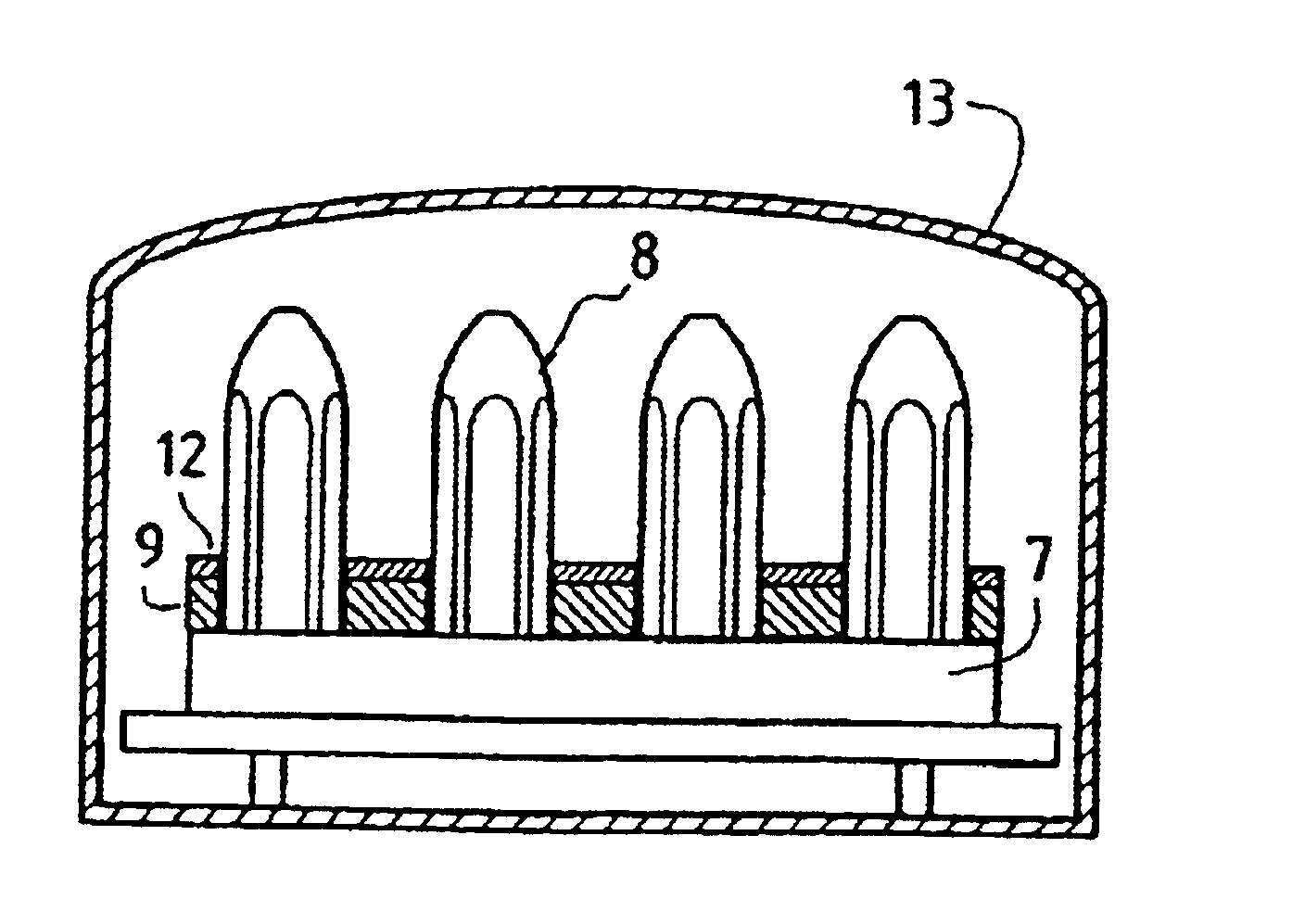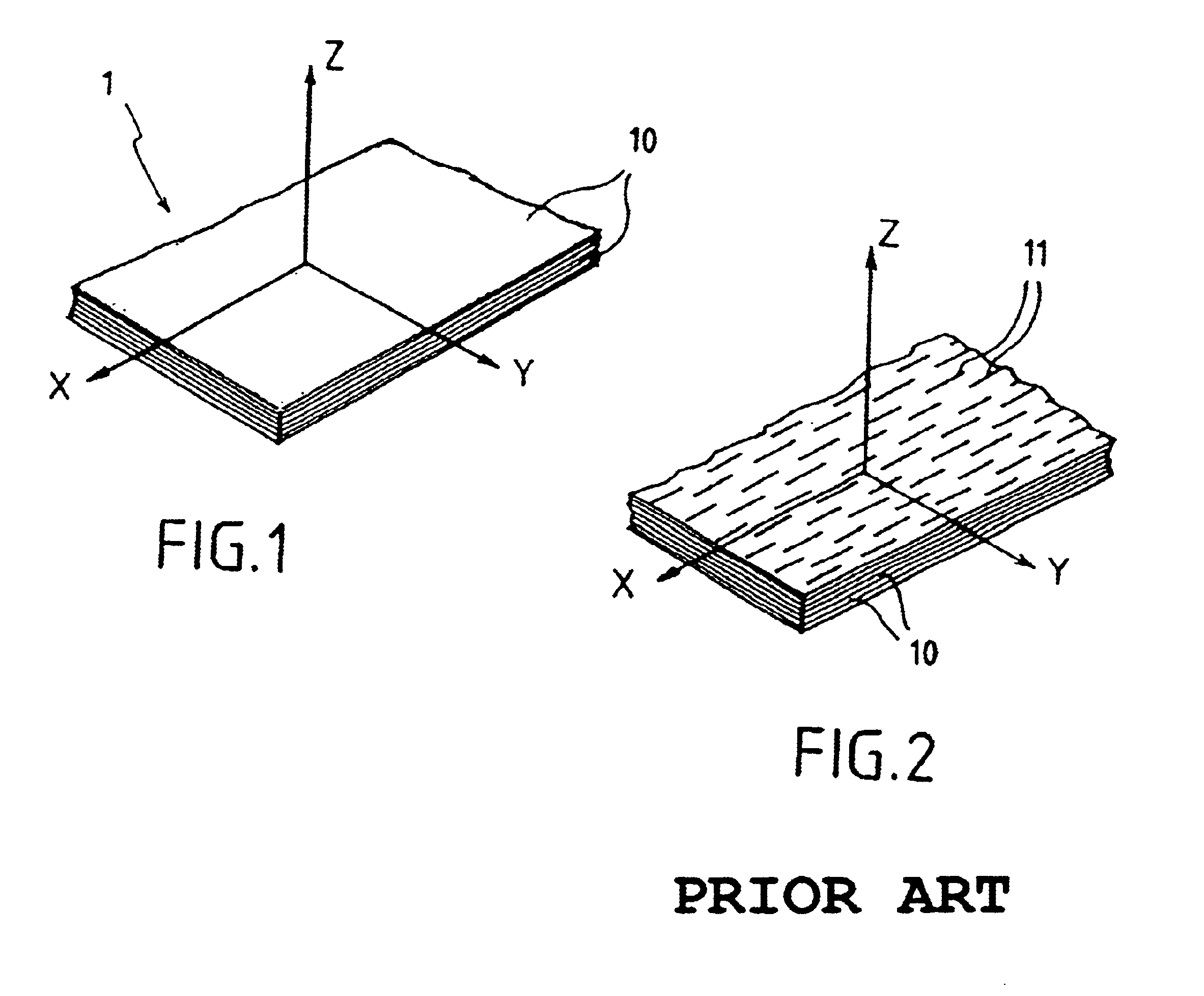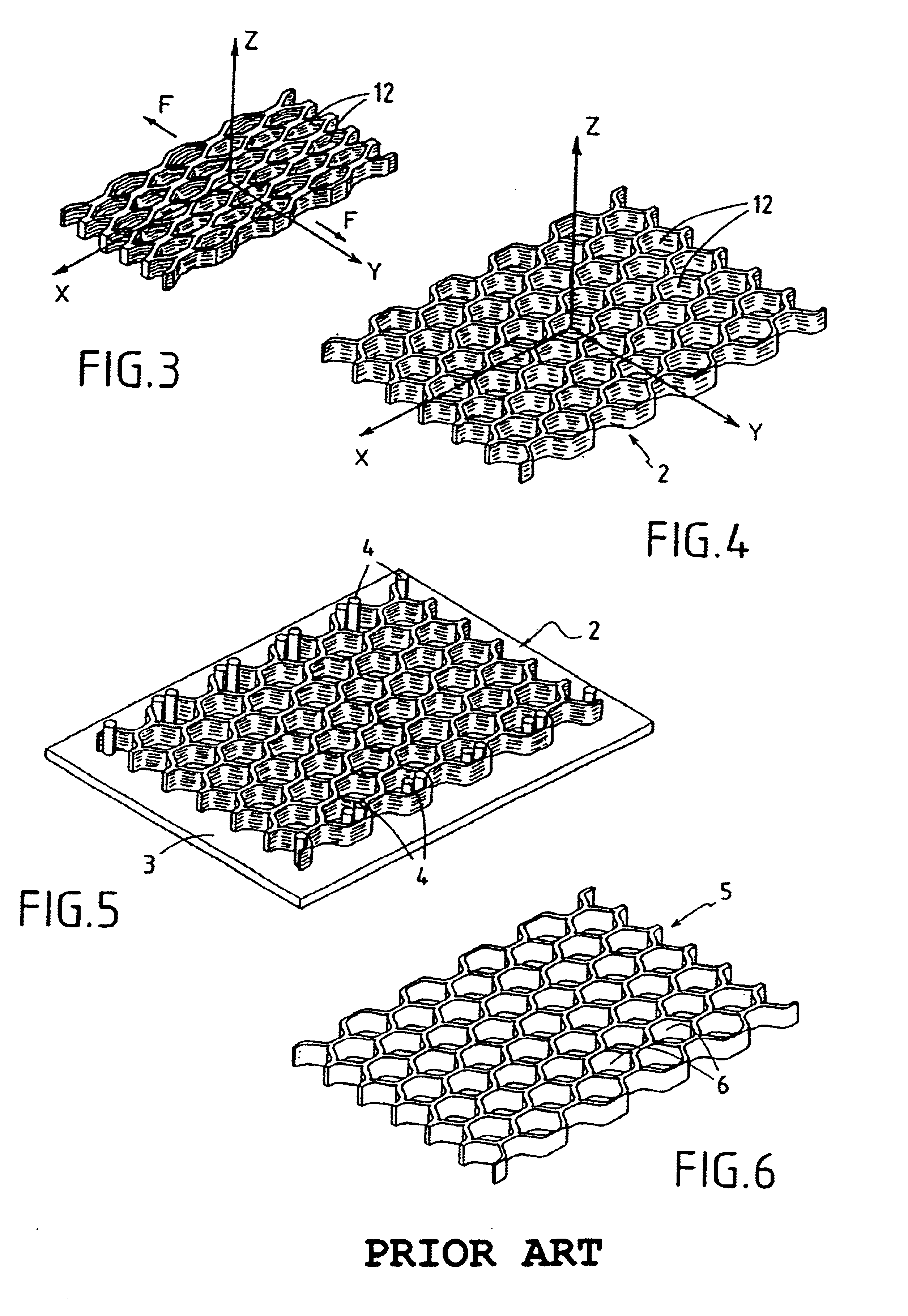Method of manufacturing honeycomb structures
a technology of honeycomb and manufacturing method, which is applied in the direction of manufacturing tools, buttons, paper/cardboard articles, etc., can solve the problems of not only affecting the overall appearance, but also the structure is damaged, and the operation is very awkward, so as to eliminate the roughness
- Summary
- Abstract
- Description
- Claims
- Application Information
AI Technical Summary
Benefits of technology
Problems solved by technology
Method used
Image
Examples
first embodiment
This special tooling comprises, in a first embodiment, a metal support plate 7 and pegs 8 projecting upwards from the support plate 7 (cf. FIG. 7). There are at least as many pegs 8 as there are cells (where the cells are referenced 90) in the deployed fabric 9, and the pegs are mounted on the support plate 7 in positions which correspond to the positions of the cells 90.
With reference to FIG. 8, the end of each peg 8 in contact with the support plate 7 is fixed to said plate by screw fastening, in particular by means of a threaded rod 10 attached to the peg 8. The threaded rod 10 has a first portion 100 received inside the peg and a second portion 101 projecting from the proximal end face of the peg. The projecting portion 101 of each threaded rod 10 passes through a corresponding bore 70 in the support plate 7 and its free end receives a nut 11 serving to hold the peg 8 against the top face of the support plate 7.
The bores 70 are preferably of diameter greater than the diameter of...
second embodiment
FIGS. 13 and 14 show the tooling of the invention.
In this second embodiment, the tooling comprises a support plate 14 and pegs in the form of inflatable bladders 15 fixed via bases 16 to the support plate 14. The bases 16 are preferably held slightly loosely to the support plate 14 so that the pegs 15 can move sufficiently relative to the plate, as in the first embodiment.
The inflatable bladders 15 are made of polyurethane, for example. The inside of each inflatable bladder 15 communicates with a pressurized gas generator 17 via the following in succession: an orifice provided through the corresponding base 16; an orifice 140 in the support plate 14; and a duct 18. Valves 20 (shown diagrammatically in FIG. 13), such as check valves controlled by the pressure in the bladders 15, and pressure limiters 21 of the controlled valve type are also provided in the orifices 140 and in the ducts 18, respectively.
The tooling 14, 15, 16 is used in a manner substantially comparable to the tooling...
PUM
| Property | Measurement | Unit |
|---|---|---|
| thickness | aaaaa | aaaaa |
| size | aaaaa | aaaaa |
| pressure | aaaaa | aaaaa |
Abstract
Description
Claims
Application Information
 Login to View More
Login to View More - R&D
- Intellectual Property
- Life Sciences
- Materials
- Tech Scout
- Unparalleled Data Quality
- Higher Quality Content
- 60% Fewer Hallucinations
Browse by: Latest US Patents, China's latest patents, Technical Efficacy Thesaurus, Application Domain, Technology Topic, Popular Technical Reports.
© 2025 PatSnap. All rights reserved.Legal|Privacy policy|Modern Slavery Act Transparency Statement|Sitemap|About US| Contact US: help@patsnap.com



